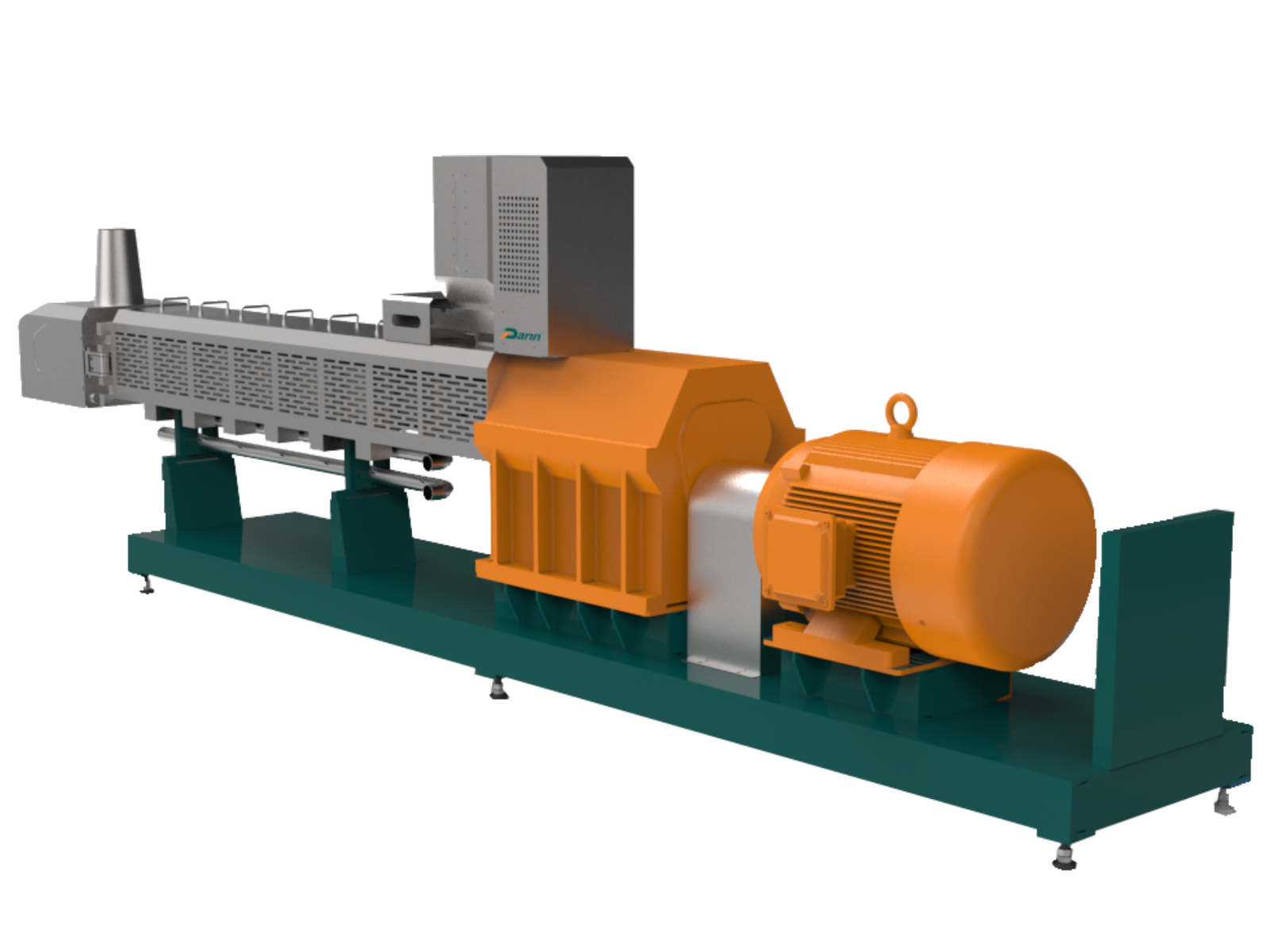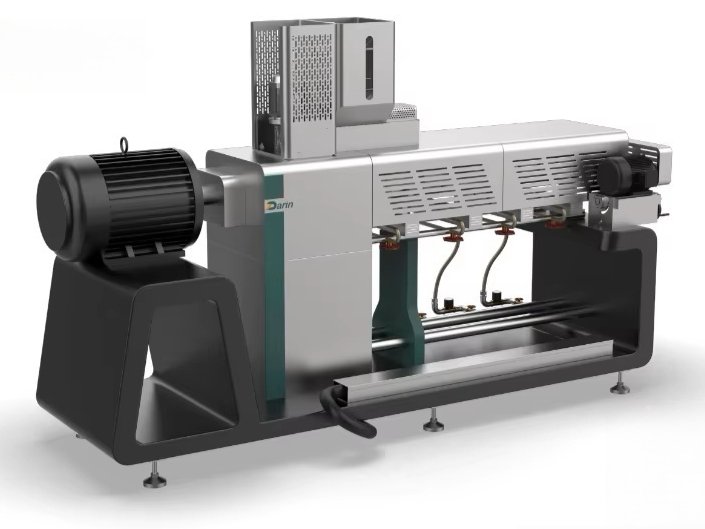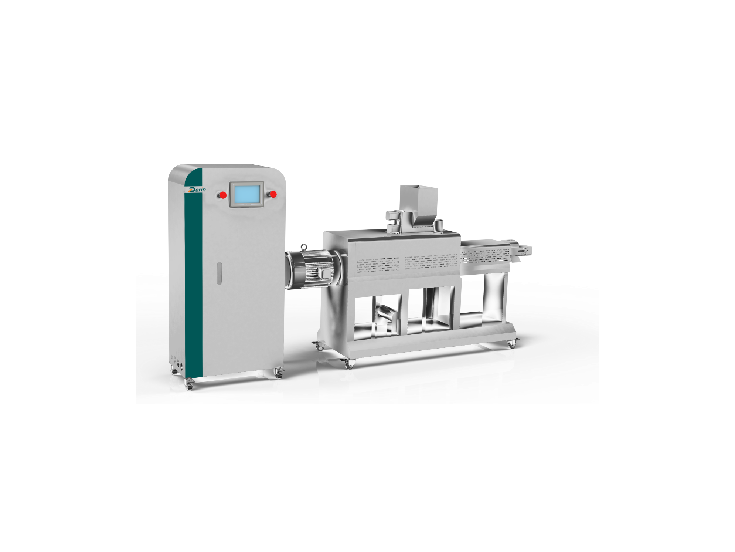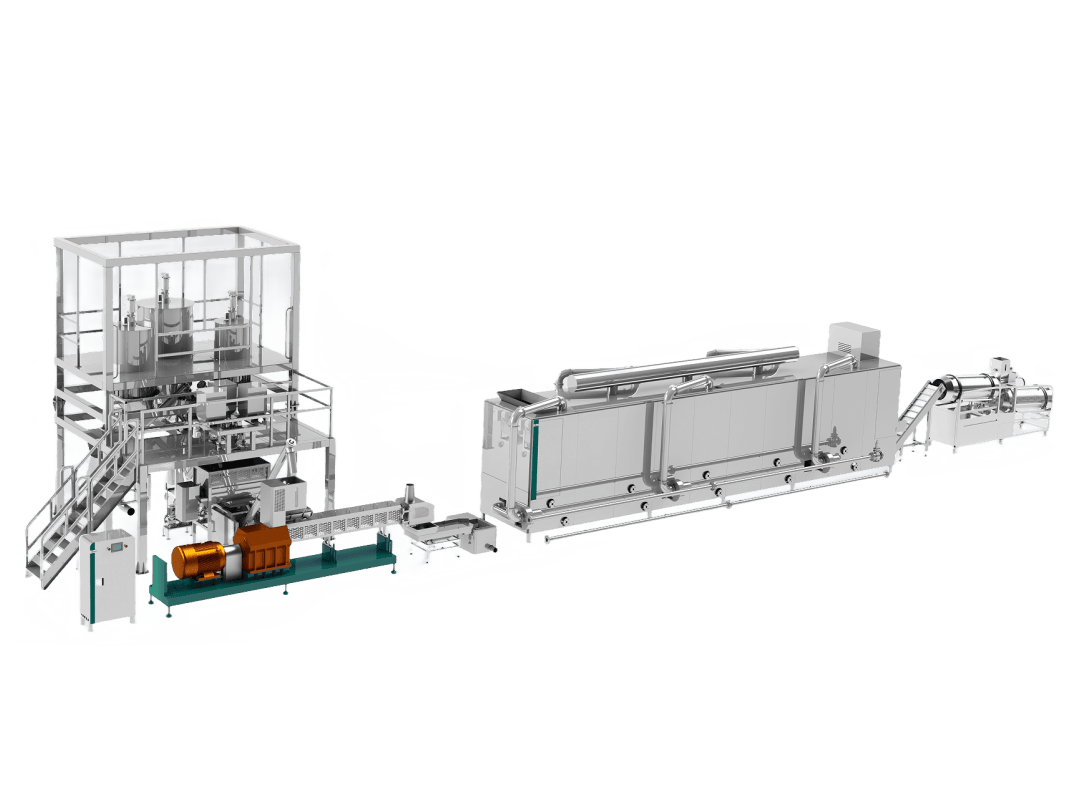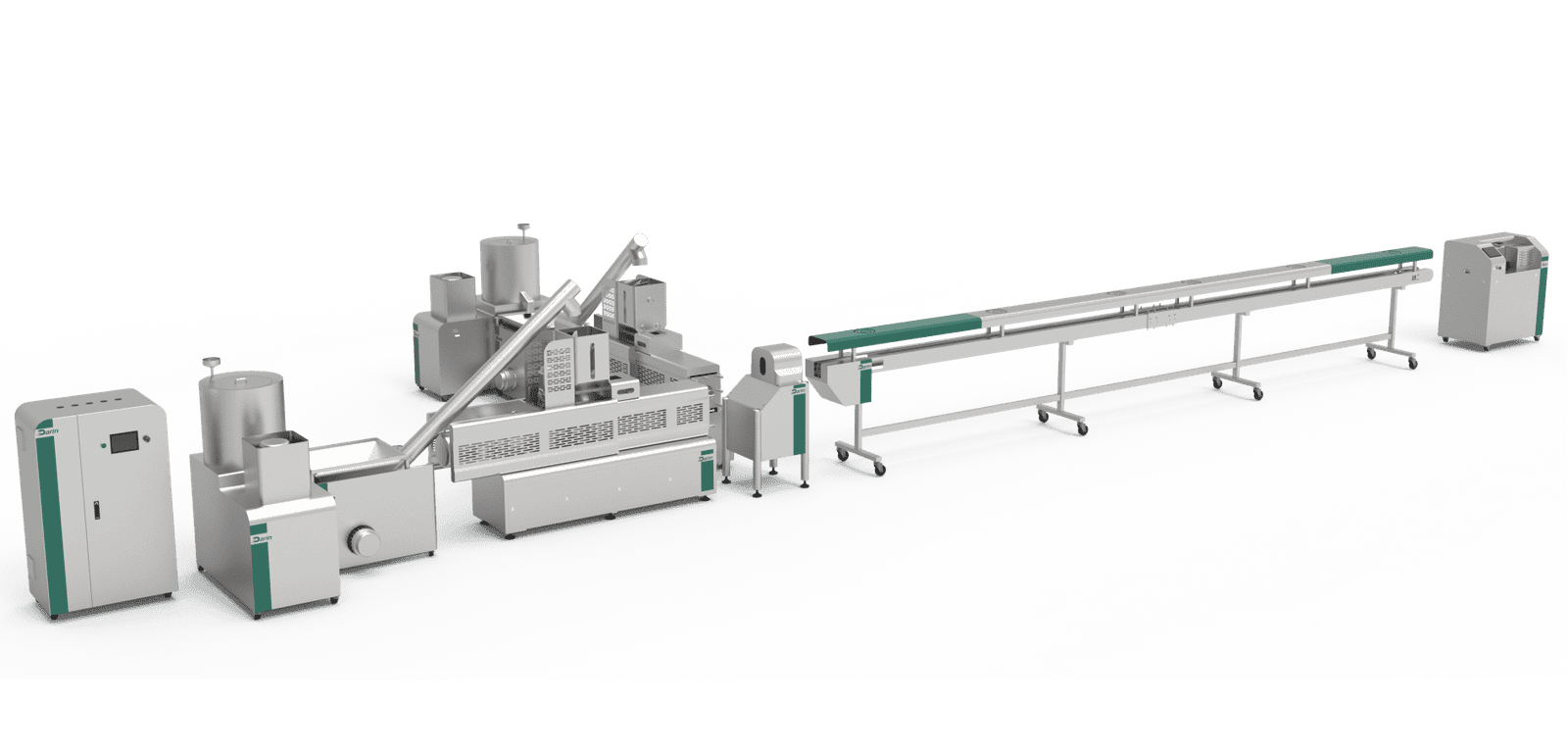
Choosing the right food for your dog is more than just a task—it's an act of love that affects their health and happiness. With so many choices out there, it can feel like navigating a maze.
Extruded dog food is a type of kibble produced through a high-temperature process that cooks and shapes the ingredients into bite-sized pieces. While it offers convenience and shelf stability, it's essential to weigh its nutritional benefits against potential drawbacks like reduced nutrient retention due to the cooking process.
I remember standing in the pet food aisle, overwhelmed by the endless rows of bags promising everything from shiny coats to boundless energy. That's when I learned about extruded dog food—a staple choice for many, thanks to its convenience and long shelf life. But like you, I wanted to make sure I was offering the best to my furry friend.
Diving into the details, I discovered that while extruded dog food is popular, understanding its nutritional impact is crucial. In this article, I'll share the insights I've gathered on the pros and cons of extruded dog food, compare it to other feeding options, and offer expert advice to help you make informed decisions for your beloved pet.
Extruded dog food retains all original nutrients.False
High-temperature processing can reduce nutrient retention in extruded food.
Extruded dog food offers convenience and shelf stability.True
The extrusion process extends shelf life and makes storage easier.
What Exactly is Extruded Dog Food?
Ever wondered what makes that crunchy kibble in your dog's bowl?
Extruded dog food is made using a process where raw ingredients are mixed, cooked under high pressure, and then shaped into kibble. This method enhances shelf life and digestibility.

The Extrusion Process Explained
When I first learned about how extruded dog food was made, it was like discovering the secret recipe behind my dog's favorite treat. Picture this: raw materials are mixed, then cooked under intense pressure and heat. It's like making a giant batch of cookies, except the dough is forced through a die to form those familiar kibble shapes. As the mixture emerges, it rapidly expands, creating a light, airy texture that’s perfect for crunching.
This technique doesn’t just create cute little shapes; it ensures uniformity and packs in vital nutrients. Plus, those high temperatures? They're a bonus because they zap harmful bacteria, keeping the food safe. But have you ever wondered what all this heat does to the nutrition1?
Nutritional Impact of Extrusion
I remember my initial concern about whether this high-heat process might strip away some of the goodness our pets need. And it's true—some nutrients can degrade. That's why many manufacturers add back vitamins and minerals afterward, ensuring our furry friends get a balanced diet.
It's all about choices, isn't it? Comparing extruded food with options like raw or baked can help us make informed decisions. Raw diets maintain more natural nutrients but need extra care to avoid contamination.
| Method | Pros | Cons |
|---|---|---|
| Extrusion | Long shelf life, safe from bacteria | Nutrient degradation |
| Raw | Retains natural nutrients | Risk of bacteria, requires refrigeration |
| Baked | Often more natural ingredients | Shorter shelf life |
Industry Standards and Innovations
In my journey with Darin Machinery, I've seen how the pet food industry is always innovating to boost nutritional quality. Companies are getting creative, blending extrusion with other techniques to enhance benefits while reducing drawbacks. Curious about what leading pet food brands2 are doing? It’s fascinating how they’re pushing boundaries.
Understanding these methods has helped me feel more confident in choosing the right diet for our pets. It’s all about meeting their health needs while considering what's convenient and affordable for us.
Extrusion kills harmful bacteria in dog food.True
The high temperatures during extrusion eliminate bacteria, ensuring safety.
Extruded dog food retains all natural nutrients.False
High temperatures degrade some nutrients, requiring post-extrusion supplementation.
How Does Extruded Dog Food Compare to Cold-Pressed Alternatives?
Ever wondered what goes into your dog’s bowl and how it affects their health? Let me share my personal journey of discovering the differences between extruded and cold-pressed dog food.
Extruded dog food is made by cooking ingredients at high temperatures, resulting in kibble that is shelf-stable and cost-effective. Cold-pressed alternatives preserve more nutrients by using lower temperatures, providing a potentially healthier option.

What Is Extruded Dog Food?
Let me take you back to a time when I first stumbled upon extruded dog food. It was during a trip to the pet store, standing in front of rows of neatly packed kibble bags. Extrusion, I learned, involves high heat and pressure to transform raw ingredients into those crunchy bits our dogs love. This method ensures consistency across batches3—something I appreciated when I realized how picky my own pup could be! Plus, it kills bacteria, making the food safer and more digestible for sensitive stomachs.
| Advantages | Disadvantages |
|---|---|
| Longer shelf life | High heat may destroy some nutrients |
| Cost-effective | Potential use of preservatives |
| Widely available | Could have lower protein content |
Understanding Cold-Pressed Dog Food
I remember the first time I heard about cold-pressed dog food. It was from a fellow dog parent at the park who swore by its benefits. Cold-pressed food is all about blending ingredients and pressing them at lower temperatures, which, as they explained, keeps those vital nutrients intact. For someone like me who tries to feed my pet as naturally as possible, this sounded promising. The flavors and vitamins remain closer to their original state, just like nature intended!
| Advantages | Disadvantages |
|---|---|
| Retains nutrients | Shorter shelf life |
| Less processed | Typically more expensive |
| Often uses higher-quality ingredients | Not as widely available |
Nutritional Differences and Health Impacts
When I delved deeper into the nutritional differences, it was clear: while both types strive for balanced nutrition, how they’re made impacts the nutrient density. Extruded foods sometimes need supplements because the high cooking temperatures can diminish nutrient levels. In contrast, cold-pressed options4 maintain more of their original nutrients, which seems to offer a closer experience to feeding raw diets.
Digestibility Considerations
For me, digestibility was key. My dog’s sensitive tummy meant that extruded kibble often worked well due to its cooked nature. But I've heard from others that cold-pressed foods can offer superior digestion benefits since they are more aligned with a dog's natural diet.
Ultimately, choosing between these options boils down to your dog’s unique needs and your priorities as their caregiver. Factors like cost, availability, and specific health considerations will guide you in picking the best option for your furry friend. Remember, every dog is different, just like every pet parent’s journey.
Extruded dog food retains more nutrients than cold-pressed.False
Cold-pressed retains more nutrients due to lower processing temperatures.
Cold-pressed dog food typically has a shorter shelf life.True
Lower processing temperatures result in shorter shelf life compared to extruded.
Are There Nutritional Concerns with Extruded Dog Food?
Ever wondered if your dog’s kibble is as nutritious as it claims to be?
Extruded dog food, made by high-pressure cooking, can lose some nutrients due to heat. However, it's designed to be complete and balanced. Proper formulation compensates for any nutrient loss, ensuring nutritional adequacy.

Understanding Extrusion in Dog Food Production
When I first started exploring different types of dog food, the term "extrusion" was a bit of a mystery to me. It turns out, extrusion is a fascinating process where ingredients are mixed and cooked under high pressure and temperature. This is what shapes the kibble we scoop into our pets' bowls every day. It’s a bit like baking bread, where the heat helps kill off any pesky microorganisms lurking around. However, like baking, this heat can sometimes degrade the more sensitive nutrients, such as vitamins and amino acids.
| Nutrient | Potential Loss | Compensation Method |
|---|---|---|
| Vitamins | High | Fortification |
| Amino Acids | Moderate | Protein Enhancements |
Potential Nutritional Concerns
The convenience of extruded dog food is undeniable; it’s shelf-stable and easy to store. But I often find myself wondering about the impact of the heat treatment5 on nutrient retention. Manufacturers seem to have a clever trick up their sleeves—they fortify the kibble with essential vitamins and minerals after extrusion. So, whenever I'm selecting a new brand, I make sure to check for those assurances of complete nutritional balance on the labels.
Comparing Extrusion with Other Methods
- Raw Feeding: I've flirted with this idea because it's touted for preserving natural nutrients but poses risks of bacterial contamination.
- Cold-Pressed: Uses less heat and might retain more nutrients but may lack thorough pathogen elimination.
Each method has trade-offs. For my furry friend, I've found that combining extruded kibble6 with fresh or raw components offers a nice balance.
How to Ensure Nutritional Adequacy
- Check Labels: I always look for AAFCO (Association of American Feed Control Officials) statements that assure me the food is nutritionally complete.
- Consult Experts: A chat with a veterinary nutritionist has helped tailor my dog's diet to his specific needs.
- Monitor Pet Health: I keep an eye on changes in his coat, energy levels, or digestion—these are subtle signs that might indicate dietary adjustments are needed.
In summary, while extruded dog food may lose some nutrients during processing, it remains a convenient and nutritionally adequate option when properly formulated. Evaluating your pet's health needs and considering a mix of feeding methods can ensure they get all the nutrients they need. If you're curious like me, explore further resources on dog nutrition7 to compare various feeding methods and make informed decisions about your pet's diet.
Extrusion destroys all nutrients in dog food.False
Extrusion causes some nutrient loss, but not all. Fortification compensates.
Raw feeding preserves more nutrients than extrusion.True
Raw feeding retains more natural nutrients but has contamination risks.
What Do Veterinarians Say About Extruded Dog Food?
Ever felt overwhelmed by the endless dog food options out there?
Veterinarians generally agree that extruded dog food, made through a high-heat process, is nutritionally balanced but may lack certain fresh ingredients. They recommend choosing brands with high-quality ingredients and consulting a vet for specific dietary needs.

Understanding Extrusion in Pet Food
Imagine walking into a pet store, eager to find the perfect meal for your furry buddy, and feeling like you're in a maze of labels and ingredients. I remember the first time I faced this challenge. It was like being a kid in a candy store, yet not knowing which candy was actually good for you! That's where understanding extrusion can make a difference.
Extrusion is the superhero of dry dog food production. It uses high heat and pressure to turn ingredients into those neat little kibble pieces your dog loves. The process is great for shelf stability8 and taste but can sometimes zap away some of those precious nutrients.
Nutritional Value and Concerns
I once chatted with my vet about what to look for in dog food, and she emphasized one thing—quality over quantity. It's not just about what's in the bag but how those ingredients hold up during processing. Extrusion can be a double-edged sword; it allows for adding vitamins and minerals, but some nutrients like vitamin C and omega-3s might need a little boost due to heat sensitivity.
| Nutrient | Stability During Extrusion | Supplementation Needed |
|---|---|---|
| Vitamin C | Low | Yes |
| Omega-3 | Moderate | Yes |
| Protein | High | No |
Comparing Extruded to Other Types
When it comes to picking the right food, it's like comparing apples to oranges—or in this case, kibble to baked or cold-pressed dog food9. Baked foods might keep more nutrients but don’t last as long on the shelf. On the other hand, cold-pressed retains raw qualities but doesn’t offer kibble's convenience. It's all about what fits your lifestyle and your dog's needs.
Veterinarian Recommendations
Veterinarians are like personal trainers for your dog's diet. They get that every dog is unique—like my old golden retriever, who had different needs than my current energetic border collie. Whether it's age, activity level, or health conditions, these factors are crucial when choosing extruded food. Always seek personalized advice from a vet who knows your pet's quirks better than anyone else.
I recommend researching reputable brands that prioritize high-quality, ethically sourced ingredients. And remember, what works wonders for one pooch might not be the best for another. If you’re curious for more expert takes, diving into resources on pet nutrition trends10 can be eye-opening and help you make the best choice for your furry friend’s diet.
Extruded dog food retains all essential nutrients.False
High heat in extrusion can degrade heat-sensitive nutrients like Vitamin C.
Veterinarians recommend extruded food for all dogs.False
Recommendations depend on individual dog needs, such as age and health conditions.
Is Extruded Dog Food Suitable for Puppies?
I remember the first time I brought home a puppy, the little ball of energy had me questioning everything, especially its diet.
Extruded dog food can be suitable for puppies if it is specifically formulated to meet their unique nutritional requirements. Look for labels indicating it's designed for all life stages or puppy growth.

Understanding Extruded Dog Food
Extruded dog food is kind of like the fast food of the dog world, cooked at high temperatures and pressures. The process helps it last longer on the shelf and ensures consistent quality. But, just like when I read nutrition labels11 at the grocery store, it's crucial to check that the nutrient profile of extruded dog food meets what your puppy needs.
Nutritional Needs of Puppies
Puppies are like little dynamos—they burn through energy faster than you can say "fetch." This means they need more protein and fat to fuel their rapid growth and development. When I look for food, I make sure these nutrients are front and center on the label. Terms like "complete and balanced" are my go-tos for ensuring I'm giving my pup everything it needs.
| Nutrient | Puppy Requirement |
|---|---|
| Protein | 22-32% |
| Fat | 8-20% |
| Calcium | 1-1.5% |
Consideration of Ingredients
Convenience is king with extruded food, but I like to think about what's actually in that kibble. I look for options packed with whole meats, veggies, and grains, steering clear of fillers and additives. After all, my puppy deserves nothing but the best.
Comparing Processing Methods
I've also explored other options like cold-pressed or raw diets. Each method has its perks—like preserving nutrients or mimicking a dog's natural diet. Weighing these against extrusion12 has helped me make informed decisions about what's best for my furry companion.
Veterinary Recommendations
Whenever I'm unsure, my vet's advice is gold. They offer personalized recommendations based on my puppy's breed, size, and health. Regular check-ups keep me confident that I'm supporting my pup's health with the right diet.
Every puppy is unique, and while extruded food might work well, it's all about finding what fits your pet's specific needs best. Exploring varied options13 has been key in keeping my puppy happy and healthy.
Extruded dog food is always suitable for puppies.False
Not all extruded dog foods meet puppies' nutritional needs.
Puppies need more protein than adult dogs.True
Puppies require higher protein levels for growth and development.
What Do Pet Owners Think About Extruded Dog Food on Reddit?
Ever found yourself deep in a Reddit thread about dog food? You’re not alone!
On forums like Reddit, pet owners have mixed feelings about extruded dog food. Many appreciate its affordability and convenience, while others question its nutritional content and ingredient quality, comparing it to alternatives like raw or baked options.

The Pros of Extruded Dog Food
Let me tell you, as someone who’s always balancing time and money, extruded dog food has been quite the lifesaver. On Reddit, countless pet owners just like me rave about how budget-friendly and convenient14 it is. Imagine running late for work and knowing you can quickly scoop out a meal that won't break the bank or spoil in a week. That's the kind of peace of mind many of us are after.
| Advantage | Description |
|---|---|
| Cost-Effective | Typically cheaper than other dog food types |
| Long Shelf Life | Can be stored for extended periods without spoilage |
| Easy Availability | Widely available in most pet stores and supermarkets |
Concerns Over Nutrition and Ingredients
But here’s the thing—while extruded dog food works for my hectic schedule, I’ve read stories from other owners who worry about its nutritional quality. There’s a lot of debate over on Reddit about the heat processing that might zap away those vital nutrients. It’s something that I’ve started thinking about more, especially when some folks mention fillers and artificial additives lurking in the ingredients list.
Concerns about additives15 are why some pet parents explore other diet options like cold-pressed or raw diets. It’s all about wanting the best for our furry friends, right?
Comparing Extruded Dog Food with Alternatives
I’ve spent many late nights scrolling through comparisons on Reddit between extruded food and its rivals like raw or baked. The general vibe? While extruded food wins on convenience, raw diets often take the crown for perceived health benefits. It's like choosing between fast food and a home-cooked meal.
| Food Type | Pros | Cons |
|---|---|---|
| Extruded | Affordable, convenient | Nutrient loss due to processing |
| Raw | Natural ingredients, perceived health benefits | Expensive, requires careful handling |
| Baked | Moderate processing, retains more nutrients | Costlier than extruded, limited options |
Community Experiences and Recommendations
One of my favorite parts about these discussions is hearing real-life stories from fellow pet owners. Like that time I read about someone whose dog had a complete turnaround health-wise after switching from extruded to baked food. Many folks recommend starting slow with new foods to watch for any allergic reactions16 or tummy troubles.
This community wisdom is invaluable when you’re trying to do what’s best for your pet, blending convenience with health-conscious choices.
Extruded dog food is more affordable than raw diets.True
Extruded dog food is generally cheaper due to lower production costs.
All extruded dog foods contain artificial additives.False
Not all extruded dog foods contain artificial additives; some are additive-free.
Conclusion
Extruded dog food offers convenience and shelf stability but may lose some nutrients during processing. It's essential to choose high-quality brands for balanced nutrition.
Explore how extrusion impacts nutrient retention in dog food, offering insights into maintaining balanced diets for pets. ↩
Learn how top pet food brands are innovating to provide high-quality, nutritious options for pets. ↩
Learn how extrusion ensures uniformity in each batch of dog food, providing consistent quality for your pet. ↩
Explore the nutritional advantages that cold-pressed dog food offers over traditional extruded kibble. ↩
Learn about the specific nutrients that can be lost during extrusion and how manufacturers address these concerns. ↩
Discover the advantages of extruded kibble compared to other dog food types, focusing on safety and nutritional balance. ↩
This resource provides a broad overview of dog nutrition, helping pet owners make informed dietary choices. ↩
This link provides an overview of extrusion in pet food production, explaining how it affects nutritional content and shelf life. ↩
Understanding the differences between cold-pressed and extruded food helps pet owners choose the best option for their dog's needs. ↩
Exploring current pet nutrition trends offers insights into innovative products and approaches to feeding pets. ↩
Learn about the essential nutrients puppies need to grow healthy and strong. ↩
Understand how extrusion affects dog food quality and nutritional value. ↩
Discover a range of dog food options suitable for puppies to find the perfect match. ↩
Learn why extruded dog food is praised for being cost-effective and convenient for busy pet owners. ↩
Explore common concerns about additives in extruded dog food and why some pet owners seek alternatives. ↩
Learn how to spot potential allergic reactions when introducing new foods to your dog's diet. ↩


